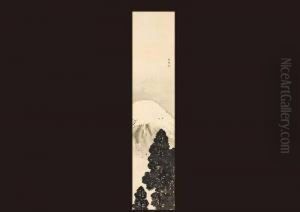Yamamoto Shunkyo Paintings
Yamamoto Shunkyo was a prominent Japanese painter known for his contributions to the development of the Nihonga style, which refers to traditional Japanese painting techniques that emphasize the use of natural materials and pigments. Born on November 5, 1871, in Kyoto, Japan, Shunkyo began his artistic training at a young age, studying under the tutelage of Kōno Bairei, a well-known painter and teacher of the Maruyama-Shijō school of painting. This school was known for its blend of traditional Japanese techniques with Western realist styles, which influenced Shunkyo's later work.
Shunkyo's talent was evident early on, and he continued his studies at the Kyoto City School of Fine Arts and Crafts and later at the Kyoto City Specialist School of Painting. He developed a unique style that integrated the techniques and aesthetics of the Maruyama-Shijō school with the realism and perspective of Western painting. His works often featured landscapes, flowers, and birds, executed with a delicate touch and a refined sense of composition.
In 1907, Shunkyo's career took a significant turn when he was appointed as an instructor at the Kyoto City Specialist School of Painting. This position allowed him to influence a new generation of artists and contribute to the evolution of the Nihonga style. He became a respected figure in the Kyoto art world and was involved in the establishment of the Kyoto Art Association.
Yamamoto Shunkyo's work received recognition and accolades throughout his career. He was a frequent participant in the prestigious Bunten (Ministry of Education Art Exhibitions), where he won several prizes. His paintings were also exhibited overseas, helping to introduce Japanese art to a wider international audience.
Shunkyo's dedication to his craft continued until his death on June 11, 1933. He left behind a legacy that not only solidified his reputation as a master of Nihonga but also influenced the course of modern Japanese art. His works are still admired today for their beauty and technical mastery, and they can be found in the collections of major museums and galleries around the world.

